[ez-toc]
Introduction
Regular physical activity is important for maintaining overall health and well-being. However, for individuals with limited mobility or chronic pain, traditional exercises may be challenging or inaccessible.
Chair exercises provide a safe and effective alternative, allowing individuals to engage in physical activity while seated.
In this article, we will explore a variety of chair exercises that target the upper and lower body, providing an opportunity for movement, strengthening, and improved flexibility.
Benefits of Chair Exercises
Chair exercises offer numerous benefits for individuals with limited mobility or chronic pain:
- Improved strength: Chair exercises target specific muscle groups, helping to increase strength and tone without placing excessive strain on the joints.
- Increased flexibility: Performing gentle stretches and range-of-motion exercises while seated can help improve flexibility and joint mobility.
- Enhanced circulation: Even with limited mobility, chair exercises can promote blood flow and circulation throughout the body, reducing the risk of blood clots and improving overall cardiovascular health.
- Pain management: Engaging in regular chair exercises can help alleviate chronic pain by strengthening supportive muscles, improving posture, and reducing stiffness.
- Mood booster: Physical activity releases endorphins, which can improve mood, reduce stress, and enhance overall mental well-being.
Video [20 Min Chair Exercises Sitting Down Workout]
Credit: HASfit
Precautions and Considerations
Before starting any exercise program, including chair exercises, consider the following precautions:
- Consult with a healthcare professional: If you have any underlying health conditions or concerns, it’s essential to consult with a healthcare professional or a physical therapist before starting a new exercise routine.
- Listen to your body: Pay attention to how your body feels during exercise. If an exercise causes pain or discomfort, modify or stop the movement and seek guidance from a healthcare professional.
- Start slowly: Begin with gentle exercises and gradually increase the intensity and duration as your body becomes stronger and more accustomed to the movements.
- Maintain proper form: Focus on maintaining good posture throughout the exercises. Sit upright with your feet flat, and engage your core muscles for stability.
- Stay hydrated: Drink water before, during, and after exercise to stay hydrated and support overall health.
Chair Exercises for Upper Body
Seated Arm Raises
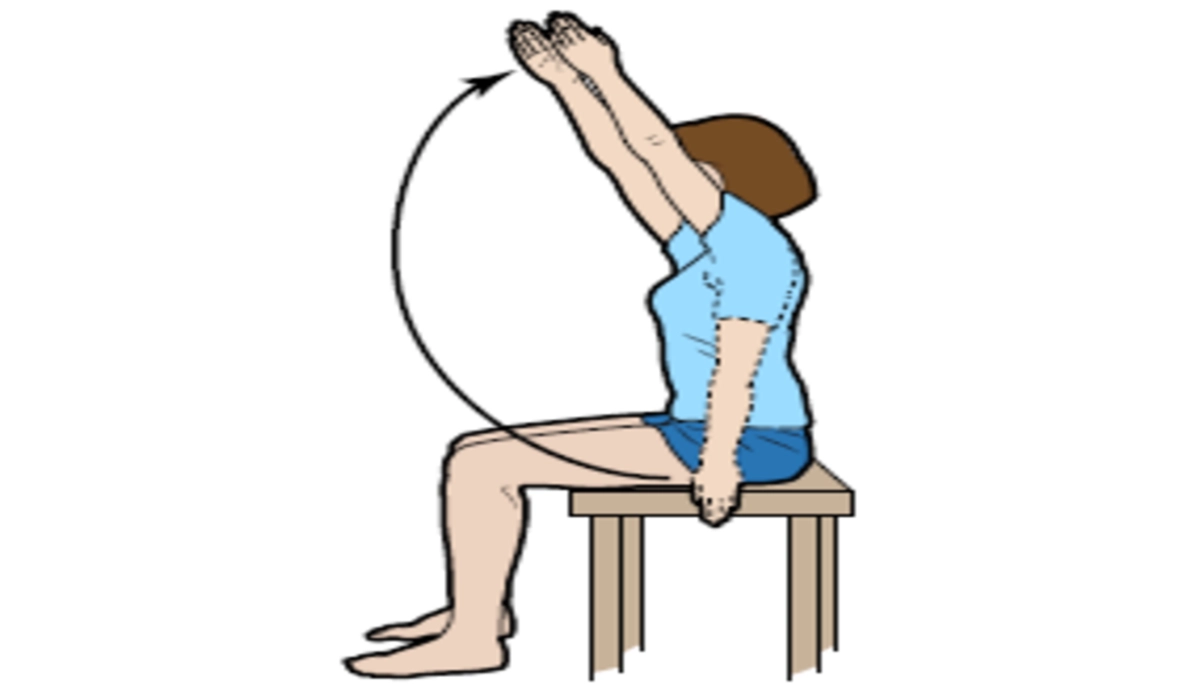
Sit upright with your feet flat on the floor. Extend your arms straight out in front of you at shoulder height.
Slowly raise your arms overhead, keeping them straight. Lower your arms back to shoulder height and repeat 10-15 times. This exercise strengthens the shoulder and arm muscles.
Shoulder Rolls
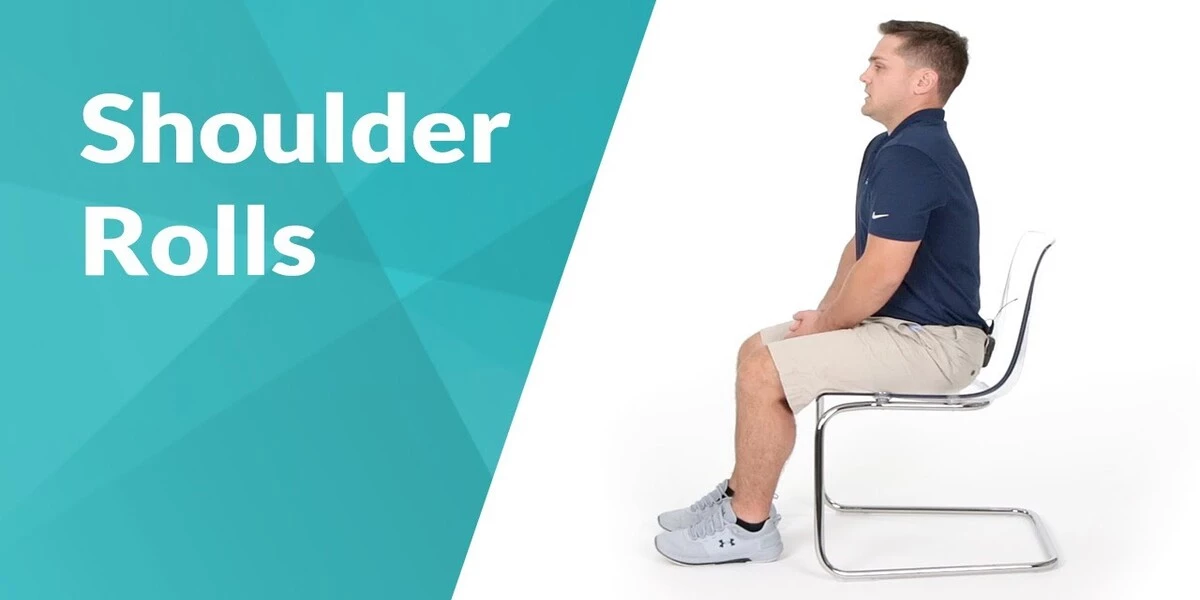
Sit upright with your feet flat on the floor. Roll your shoulders forward in a circular motion, then roll them backward.
Repeat the movement 10-15 times in each direction. Shoulder rolls help to improve flexibility and reduce tension in the shoulder area.
Chest Stretch
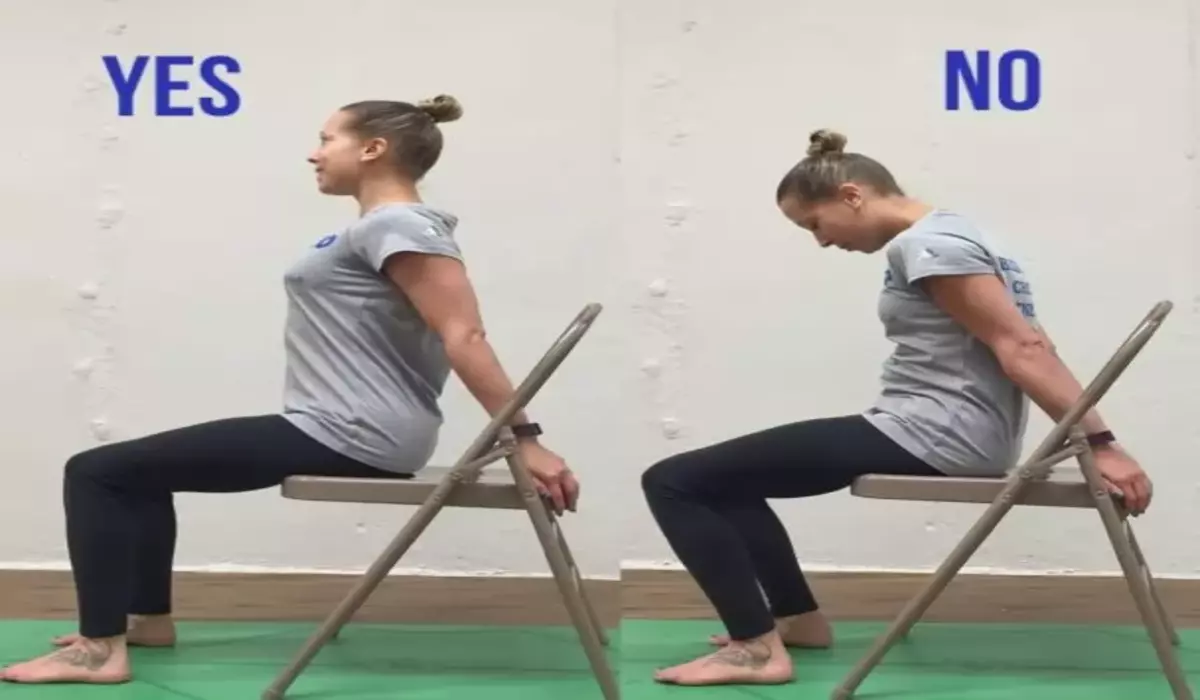
Sit upright with your feet flat on the floor. Interlace your fingers behind your back and gently straighten your arms while lifting your chest.
Hold this stretch for 15-30 seconds, feeling a gentle stretch in the chest muscles. Release and repeat 2-3 times.
Seated Tricep Dips
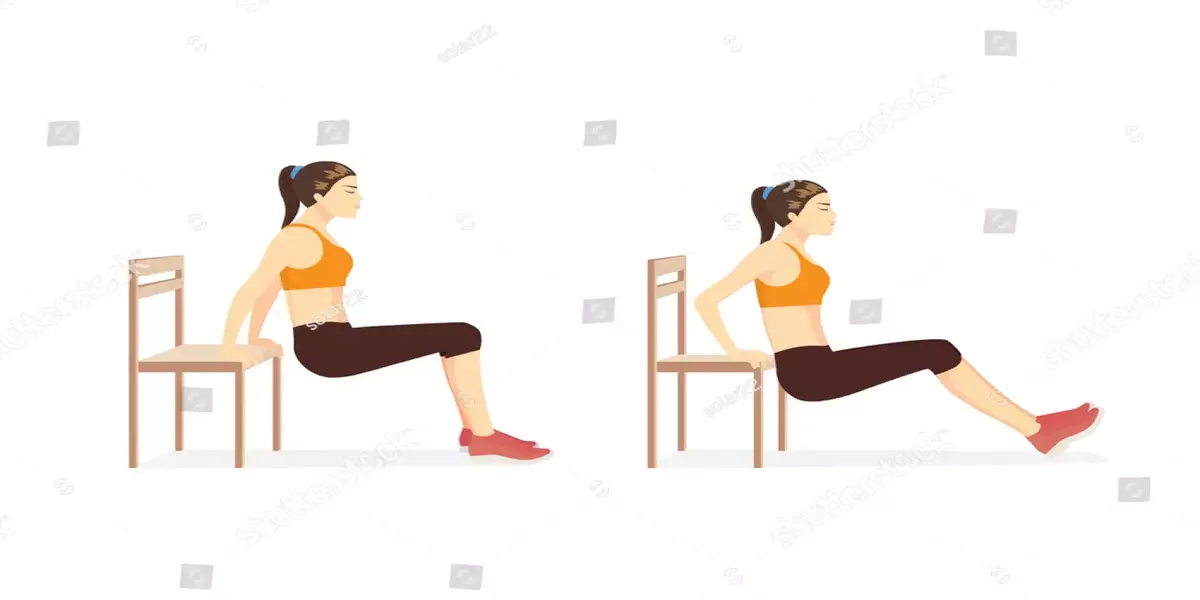
Position your hands on the edge of the chair, fingers pointing forward. Walk your feet forward and slide your bottom off the chair.
Bend your elbows and lower your body toward the ground, keeping your back close to the chair. Push back up to the starting position and repeat 10-15 times. Tricep dips help strengthen the back of the arms.
Seated Twist
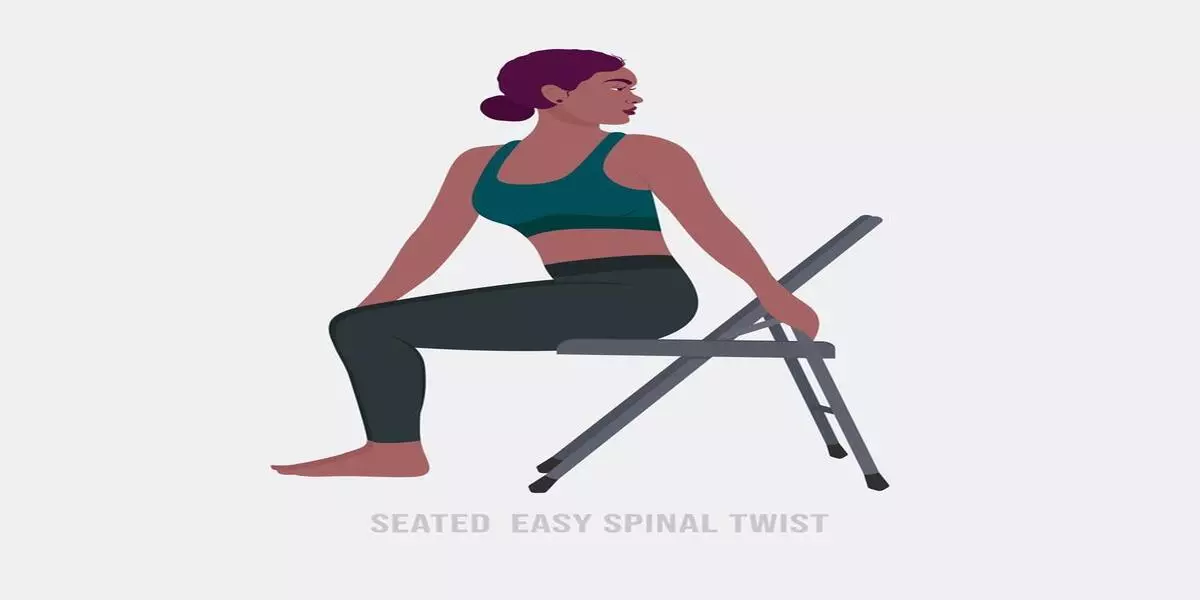
Sit upright with your feet flat on the floor. Place your right hand on your left knee and gently twist your upper body to the left, looking over your left shoulder.
Also Read: Posture-Correcting Exercises to Relieve Neck and Upper Back Pain
Hold this position for 15-30 seconds, then repeat on the opposite side. This exercise helps to improve spinal mobility and stretch the back muscles.
Chair Exercises for Lower Body
Seated Leg Lifts
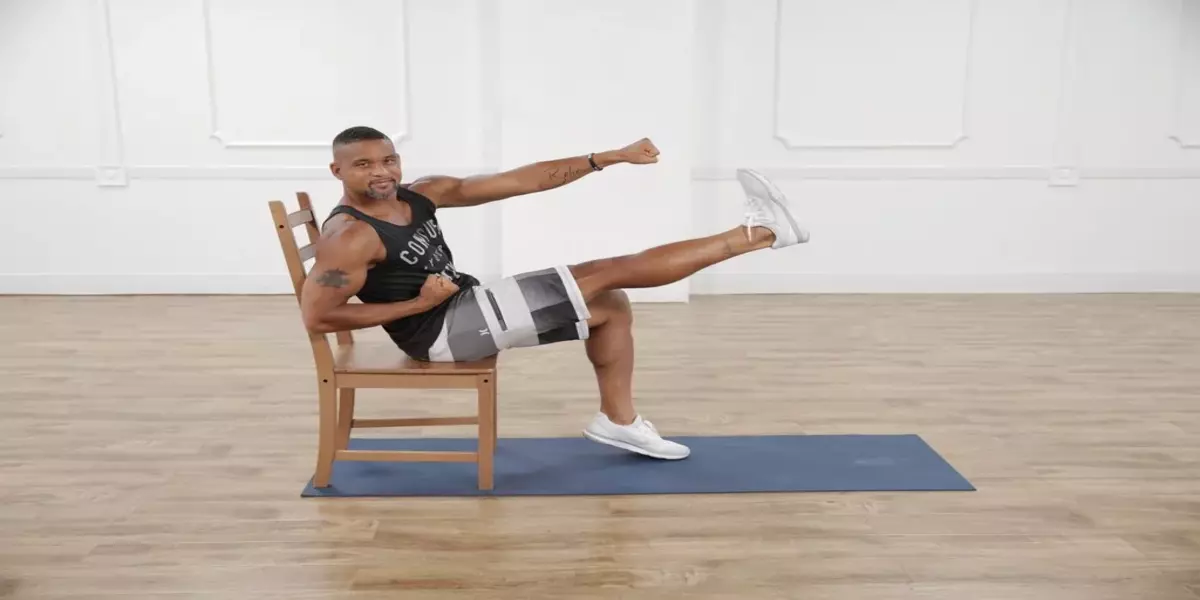
Sit upright with your feet flat on the floor. Lift one leg straight out in front of you, then lower it back down. Repeat with the other leg.
Perform 10-15 leg lifts on each side. This exercise targets the quadriceps and can be modified by adding ankle weights for increased resistance.
Ankle Circles

Sit upright with your feet flat on the floor. Lift one foot off the ground and slowly rotate your ankle in a circular motion.
Perform 10-15 circles in one direction, then switch to the other direction. Repeat with the other foot. Ankle circles help improve ankle mobility and flexibility.
Seated Marching
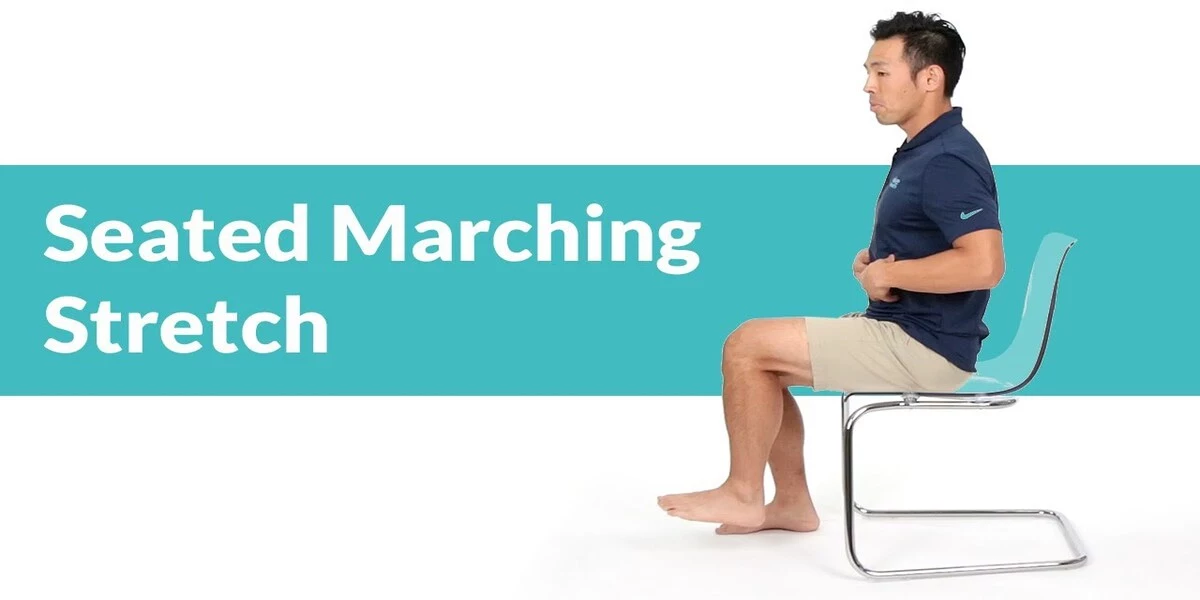
Sit upright with your feet flat on the floor. Lift one knee toward your chest, then lower it back down. Repeat with the other knee.
Perform 10-15 marching movements on each side. This exercise engages the hip flexors and helps improve lower body strength.
Seated Heel-to-Toe Raises
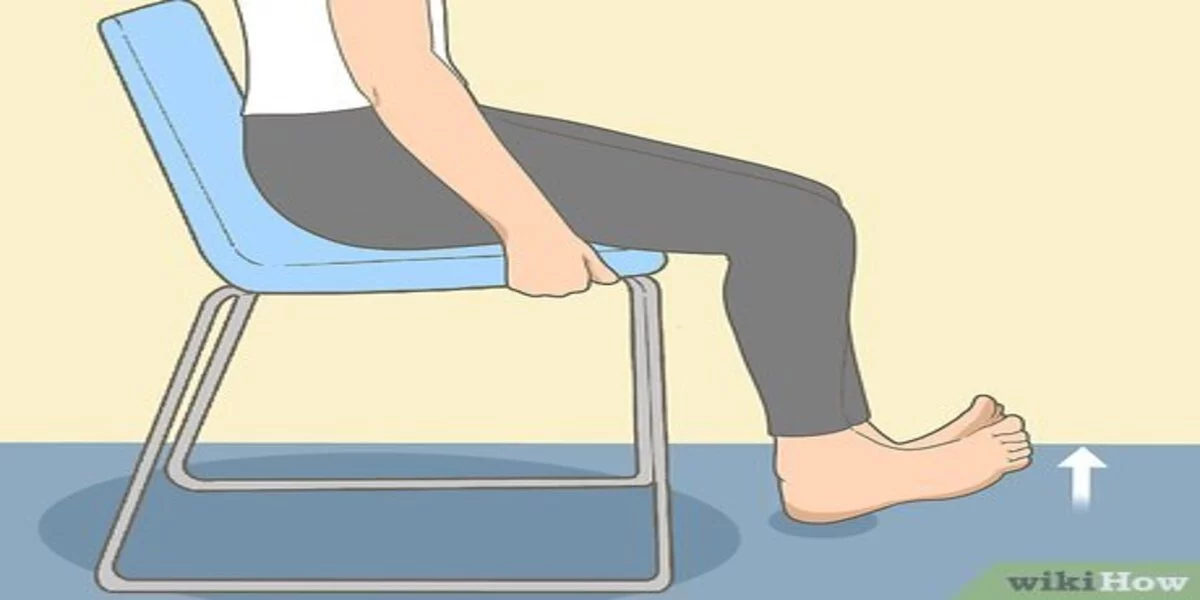
Sit upright with your feet flat on the floor. Lift your heels off the ground, keeping your toes on the floor. Lower your heels back down and then lift your toes off the ground, keeping your heels down.
Repeat this heel-to-toe raising movement for 10-15 repetitions. This exercise targets the calf muscles and helps improve ankle strength.
Seated Glute Squeezes
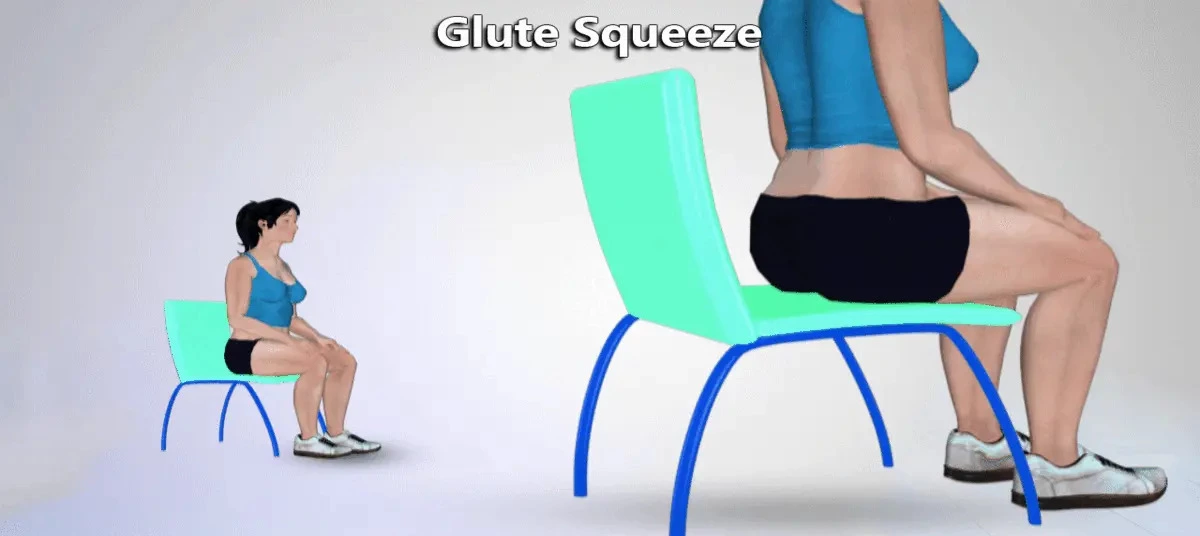
Sit upright with your feet flat on the floor. Squeeze your glutes (buttocks) together and hold for a few seconds.
Release and repeat 10-15 times. This exercise helps to strengthen the gluteal muscles and improve hip stability.
Additional Tips for Chair Exercises
- Incorporate deep breathing: Take deep breaths while performing chair exercises to enhance relaxation and oxygenation of the muscles.
- Gradually increase intensity: As your strength and endurance improve, increase the number of repetitions or add light weights to challenge your muscles.
- Combine upper and lower body exercises: Create a well-rounded workout by alternating between upper and lower body exercises, allowing for a balanced and comprehensive workout.
- Use proper chair and support: Ensure that the chair you are using is stable and supportive. Avoid chairs with wheels or those that are prone to tipping.
Enjoy variety
Keep your exercise routine interesting by incorporating different exercises and variations. This helps to target different muscle groups and prevents boredom.



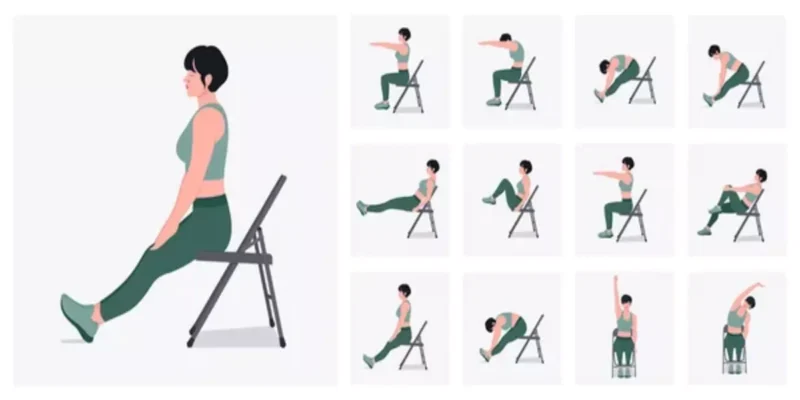


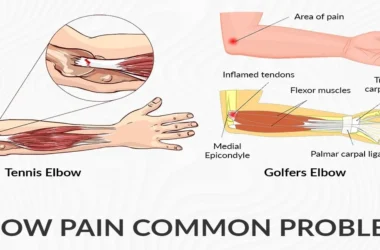

Excited to start chair exercises. Also have pool access during summer.
Total hip replacement is this Nov 2023. I am physically limited but determined to better my physical self. Osteo arthritis stage 3 n 4 and Fibromyalgia. Used to 2alk 7.5 km per day my max. Cant even walk 100 ft now. Want to be the best i can be. Sdtarted taking K2 with 5000 IU D3 in it 7 months ago n noticed in past 3 months left hip is improving somewhat.
I am 77 years old. I have injured my left foot causing my arch to fall, and my foot to turn inward. My foot and legs hurt whenever I am standing and walking now. I use to walk 3-5 days a week, and I want to find exercises for my foot and to strengthen my legs so I can stand without pain and I want to start walking more again. Can you help me, please?